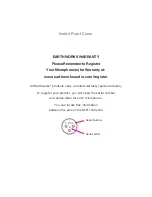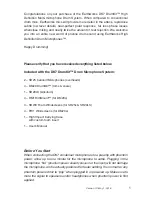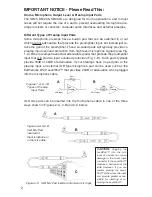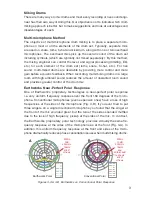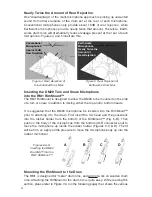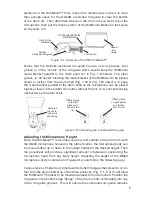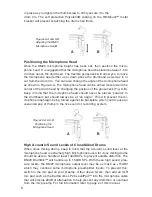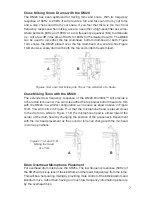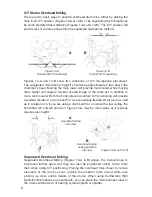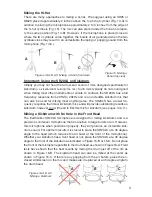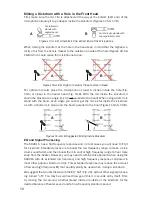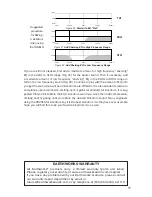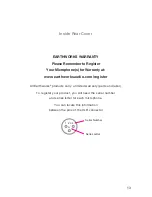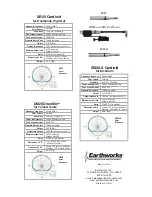
7
Close Miking Snare Drums with the DM20
The DM20 has been optimized for miking toms and snare. With its frequency
response of 50Hz to 20kHz it will provide a full and fat sound from your toms
and a nice crisp sound from your snare. If you feel that there is too much low
frequency response when miking a snare, use either a high-pass filter set some-
where between 60Hz and 100Hz or a low frequency equalizer (EQ) to attenuate
(i.e. cut) a few dB in the area of 60Hz to 100Hz for the desired results. The DM20
can be used to mic either the top drumhead, bottom drumhead or both. Figure
10-A shows the DM20 placed over the top drumhead of a snare while Figure
10-B shows a snare drum with both the top and bottom heads miked.
Figures 10-A and 10-B Miking the Top or Top & Bottom of a Snare
A
B
Figures 11-A and 11-B
Miking the Head
of a Tom
A
B
Close Miking Toms with the DM20
The extended low frequency response of the DM20 DrumMic™ will provide a
rich and full tom sound. You can mike either the top and/or bottom head of a tom
with the DM20 in a similar configuration as on snare as shown above in Figure
10-B. You will notice in Figure 11-A that the microphone head is placed closer
to the drum rim, while in Figure 11-B the microphone head is aimed toward the
center of the drum head by changing the position of the gooseneck. Experiment
with the mic head placement as the sound or tone can change with the mic head
in various positions.
Drum Overhead Microphone Placement
For overhead drum miking use the SR25s. The low frequency response (50Hz) of
the SR25 will pick up less of the kickdrum and the lower frequencies from the toms.
This will be a help during mixing by providing more control of the individual tom and
kickdrum mics, rather than having too much low frequency information picked up
by the overhead mics.


